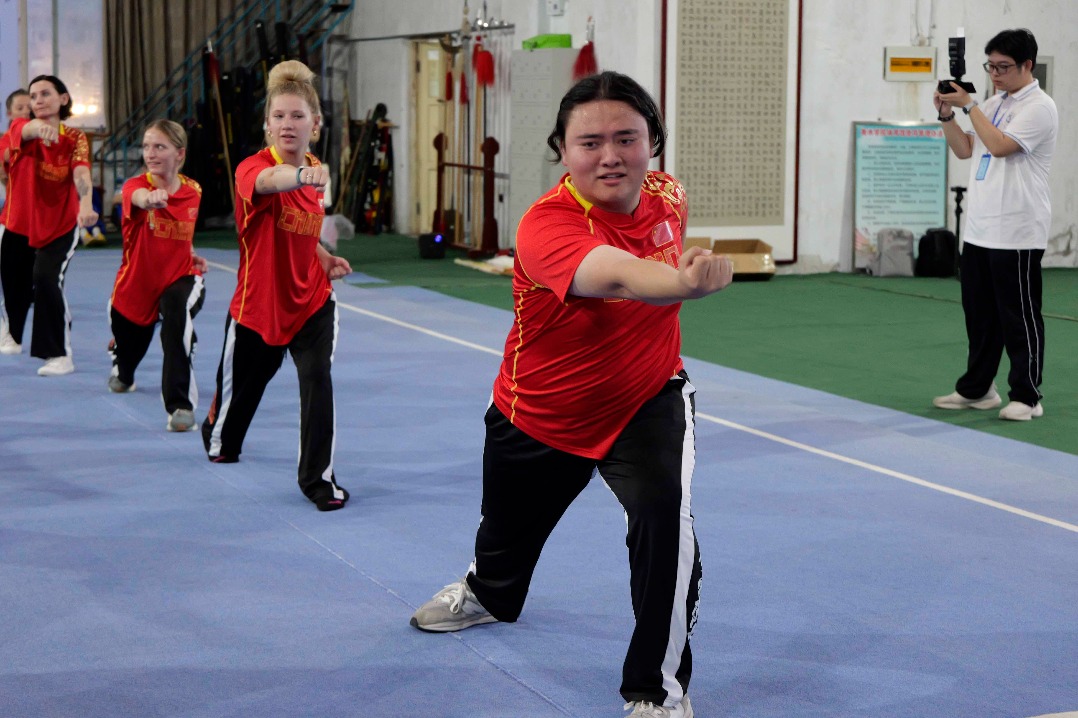Zhejiang's population increasing


Balanced regional development, favorable policies for talent key
A foot massage therapist in Hangzhou, Zhejiang province, made headlines recently after a video interview in which he said he received a 1.25 million yuan ($173,000) housing subsidy from the city government for being a Class C high-caliber talent.
As a recognized "national technical expert", according to the Ministry of Human Resources and Social Security, 40-year-old Zhao Zhanzhan became one of the beneficiaries of the city's policy to support the development of talent and encourage more people to work there.
"I used to think that high-level talent should be graduates from prestigious universities, academicians and those with higher levels of education," Zhao said. "I never expected that skilled professionals in the service industry like us could also be considered as such."
Zhao's story is the epitome of Zhejiang's efforts to attract talent, which have proved effective. Late last year, the province's permanent resident population was 66.27 million, an increase of 500,000 in a year. But with deaths outnumbering births, the natural population decrease was 57,000, meaning most of the increase was due to people moving from other parts of China.
With the country facing the challenges of a shrinking and aging population, it is time for cities to change their ideas about human resources and adjust policies to encourage more people to stay, said Wang Qiang, a researcher with the Institute for China Sustainable Urbanization at Tsinghua University in Beijing.
"Cities need to change from 'competing for talent' to 'competing for people'. People are the foundation for production, market and consumption," he said.
Cities should give equal opportunities to local residents and newcomers. For example, many migrant workers who have done well in their occupations have become shareholders in companies in Zhejiang, Wang said.
"With their salaries increased, some of them will bring their family members too, who together become part of the permanent population," he said. "If cities only want high-level talent, the downward trend of population will possibly accelerate."
Zhejiang's balanced development across the province is another reason for its powerful magnetism, according to Wang.
The GDP of two of Zhejiang's 11 cities — Hangzhou and Ningbo — surpassed 1 trillion yuan last year, and in five other cities it exceeded 500 billion yuan.
The difference in public services such as education and healthcare between the provincial capital and other cities is not large, which means outsiders can expect a good life settling in a small city, with similar wages but lower costs, Wang said. It is also why developed cities can avoid "big city malaise" as Zhejiang welcomes so many new people.
Yuan Xin, a professor at Nankai University's School of Economics and vice-president of the China Population Association, said the key reason Zhejiang had the biggest population increase among China's provincial-level regions last year is its strong economy.
"The biggest motivation for people to move from one place to another is to seek employment and economic benefits," he said.
Zhejiang's GDP was 8.26 trillion yuan last year and its per capita GDP was 125,043 yuan — compared with the national average of 89,358 yuan. Besides Ningbo's advantages in the manufacturing industry and Hangzhou's vibrant digital economy, almost every county has a characteristic industry, which means there are many job opportunities.
In the future, population mobility will still be vibrant, with economically active areas such as the Yangtze River Delta region, the Pearl River Delta region and Beijing-Tianjin-Hebei region remaining the most attractive, Yuan said.
In 2022, 20 provinces reported a higher crude death rate than crude birthrate. The incoming population helps ease the tension from the natural population decrease, he said. However, in the long term, that effect may wane if the fertility rate becomes extremely low.
"It's time for cities to adjust economic and social planning based on the fact that population will keep decreasing," Yuan said.
Jilin and Liaoning, two provinces in Northeast China, reported net population inflows last year, reversing more than a decade of net outflows.
Wang said that is due to the central government's efforts to promote the revitalization of the region.
He said cities should not only create good employment, entrepreneurship and business environments, but also a good social and cultural atmosphere to help newcomers develop emotional ties to their new home.
- China launches nationwide crackdown on misconduct in medical sector
- Blood donation rate rises, shortages remain
- Typhoon Wutip spurs emergency response
- China's BMI tech reaches new heights
- Gambian farmer pays tribute to 'father of hybrid rice'
- China enhances coastal ecosystem protection and restoration





































